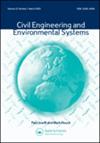Local public right of way for surface and subsurface resource integration
IF 1.1
3区 工程技术
Q3 ENGINEERING, CIVIL
引用次数: 0
Abstract
ABSTRACT A utilidor is a ‘system of systems’ infrastructural solution to the ‘subsurface spaghetti’ problem resulting from direct burial of utility transmission infrastructure beneath the public right of way (PROW). The transition from direct burial to utilidors in older, dense American cities has generally not occurred, despite the potential to increase system performance in a long-term, financially and environmentally sustainable manner, because it would require reform of local planning practices and of utility pricing to support financing within a complex regulatory system. Utilidor adoption in New York City (NYC) would be a significant local infrastructure transition, amplifying the need for locality-based research, that would occur while each utility sector undergoes its own infrastructure transitions, thereby increasing the level of regulatory complexity. This paper applies transitions analysis, recursive collective action theory, and capacity to act analysis to NYC’s experience with its PROW subsurface spaghetti problem and utilidor implementation to demonstrate a place-based methodology that identifies specific sources of resistance to innovative subsurface design and feasible pathways for resolving them. This methodology would be transferable for application to other American cities or classes of American cities to supplement the limits of generalised subsurface and subsurface resource integration research for practitioner application.地表与地下资源整合的地方公共通行权
公用事业管道是一种“系统的系统”基础设施解决方案,用于解决“地下意大利面”问题,这是由于公用事业传输基础设施直接埋在公共路权(PROW)下方造成的。在美国人口密集的老城市,从直接掩埋到公用事业的转变通常没有发生,尽管有可能以长期、财政和环境可持续的方式提高系统性能,因为这需要改革地方规划实践和公用事业定价,以支持复杂监管体系内的融资。在纽约市,公用事业公司的采用将是一个重大的地方基础设施转型,扩大了对基于地区的研究的需求,这将在每个公用事业部门经历自己的基础设施转型时发生,从而增加了监管的复杂性。本文将过渡分析、递归集体行动理论和行动能力分析应用于纽约市的PROW地下面条问题和公用事业实施的经验,以展示一种基于地点的方法,该方法确定了创新地下设计的具体阻力来源和解决这些问题的可行途径。该方法可推广应用于美国其他城市或类别的城市,以补充一般性地下和地下资源整合研究的局限性,供实践者应用。
本文章由计算机程序翻译,如有差异,请以英文原文为准。
求助全文
约1分钟内获得全文
求助全文
来源期刊

Civil Engineering and Environmental Systems
工程技术-工程:土木
CiteScore
3.30
自引率
16.70%
发文量
10
审稿时长
>12 weeks
期刊介绍:
Civil Engineering and Environmental Systems is devoted to the advancement of systems thinking and systems techniques throughout systems engineering, environmental engineering decision-making, and engineering management. We do this by publishing the practical applications and developments of "hard" and "soft" systems techniques and thinking.
Submissions that allow for better analysis of civil engineering and environmental systems might look at:
-Civil Engineering optimization
-Risk assessment in engineering
-Civil engineering decision analysis
-System identification in engineering
-Civil engineering numerical simulation
-Uncertainty modelling in engineering
-Qualitative modelling of complex engineering systems
 求助内容:
求助内容: 应助结果提醒方式:
应助结果提醒方式:


